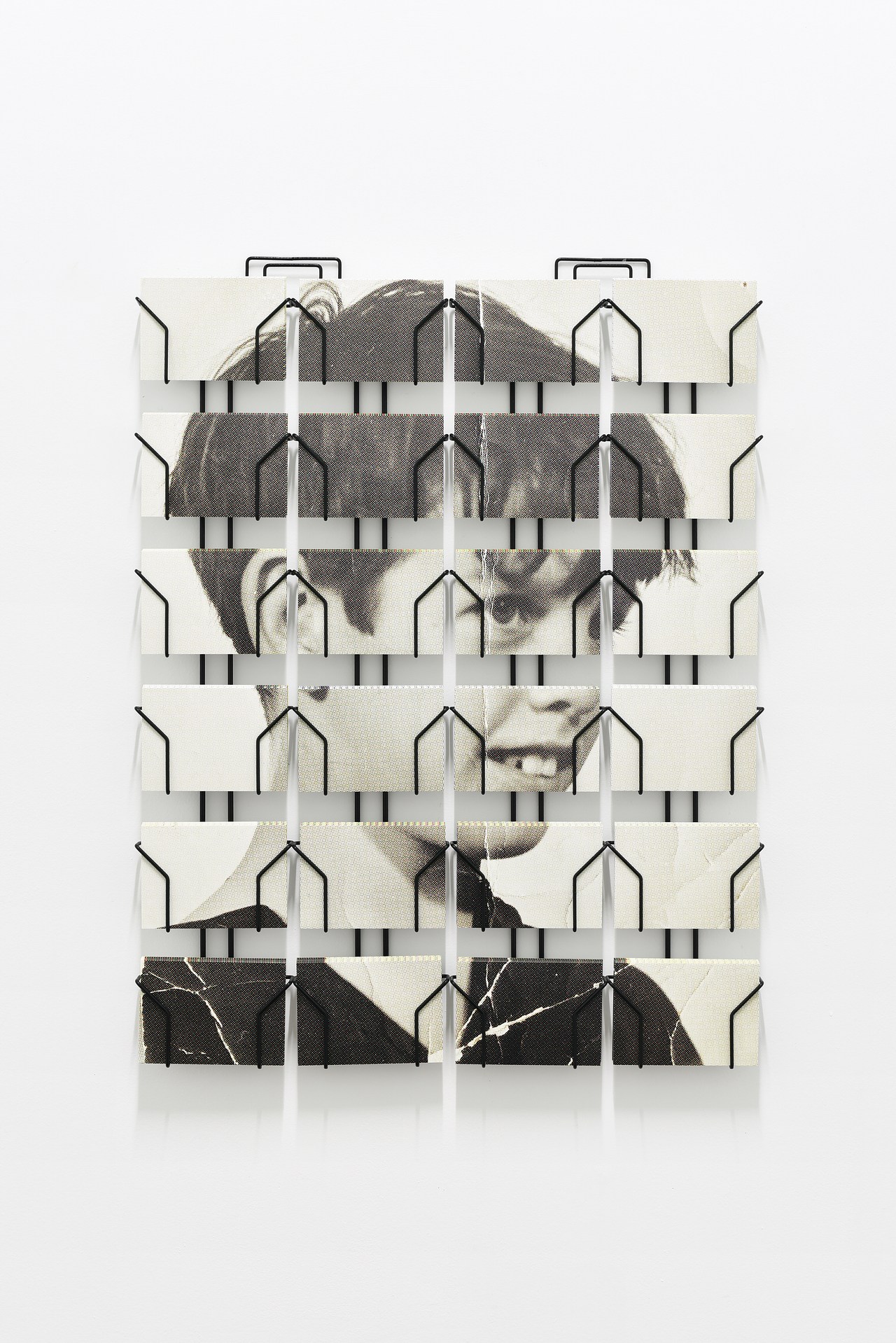Made in Heaven
2004 - Film & Video (Film & Video)
2 min
Mark Leckey
In Made In Heaven , we are face to face with a sculptural apparition, a divine visitation in the artist’s studio. It isn’t just any object, but an iconic sculpture of the end of the 20th century: Jeff Koons’ Bunny. One key question in this work is of course the construction of images, but there is also the question of sculpture, of the passage from two-dimensionality to three-dimensionality. The reason for using the moving image, above all theoretical, is also part of interrogation regarding the material construction of images. For this film, he remakes Koons’s sculpture in order to be able to experiment himself in his studio. One can discern the contours of his studio and sometimes his presence in a lot of his videos. With reference to Marcel Duchamp, he wants to create the ultimate Machine Célibataire (Bachelor Machine), by producing nothing other than itself in reference to the self- reflexivity of Pop. The Bunny is a sculptural form in space which also produces images. It is obvious that we are in an image which is entirely constructed since it is impossible to film the object without having, at a certain point, the reflection of the camera on the steel surface. Mark Leckey is interested in the possibilities of new technologies and places at the heart of his practice the revelation of a sensitive and quasi-magical world. The film loop (which only lasts 2mn) places the spectator in a completely hypnotic state.
Mark Leckey became know in the 1990s with a cult film Fiorucci Made Me Hardcore about English clubs since the early 1970s. Rather like Jeremy Deller, his work at the time was a mixture of Pop culture and counter-culture. In fact a constant in his work is an interest in the icons of our visual culture. In Felix Gets Broadcasted, he became interested in Felix The Cat who was first of all present at the beginning of the 20th century in over 250 newspapers and was the first character to benefit from TV transmission in 1928 in New York. This is the story of a cartoon hero and his successful conversion from cinema to the written press and then to TV, before being integrated into the art system. Mark Leckey is of the same generation as Damien Hirst but has had a very different career path. He was part of an alternative music band and is currently professor of the history of cinema in Frankfurt. He won the Turner Prize in 2008. Mark Leckey was born in Birkenhead, UK . He lives and works in London.
Colors:
Related works featuring themes of: » Animation, » Appropriation Art, » Art in Art, » British

© » KADIST
Ian Wallace
2000Untitled (Breathless) presents a folded newspaper article on Jean-Luc Godard’s À Bout de Souffle (Breathless)...

© » KADIST
Kota Ezawa
2017The Crime of Art is an animation by Kota Ezawa that appropriates scenes from various popular Hollywood films featuring the theft of artworks: a Monet painting in The Thomas Crown Affair (1999), a Rembrandt in Entrapment (1999), a Cellini in How to Steal a Million (1966), and an emerald encrusted dagger in Topkapi (1964)...

© » KADIST
Charles Avery
2012Since 2005, Charles Avery has devoted his practice to the perpetual description of a fictional island...

© » KADIST
Chen Shaoxiong
2007After engaging primarily with video and photography for more than a decade, Chen turned to painting to explore the issue of urban change and memories—both personal and collective...

© » KADIST
Juan Capistran
2012The 10 $1 bills that make up From a Whisper to a Scream (2012) read like instructions in origami...

© » KADIST
Alessandro Balteo Yazbeck
2008Part of a larger series of photographic works, Alessandro Balteo Yazbeck’s Corrupted file from page 14 (V1) from the series La Vega, Plan Caracas No...

© » KADIST
Petra Cortright
2012In the flash animation SpringValle_ber_girls , Petra Cortright collages together surreal scenes out of unnaturally idyllic desktop screensavers with equally unreal computer-generated women that pop in and out of the landscape...

© » KADIST
Matt Lipps
2011Untitled (Women) (2011) presents a startlingly succinct history of violently romanticized femininity...

© » KADIST
Juan Capistran
2005White Minority , is typical of Capistran’s sampling of high art genres and living subcultures in which the artist subsumes an object’s high art pedigree within a vernacular art form...

© » KADIST
Martin Boyce
2003In the installation Our Love is like the Flowers, the Rain, the Sea and the Hours, Martin Boyce uses common elements from public gardens – trees, benches, trashbins– in a game which describes at once a social space and an abstract dream space...

© » KADIST
Rosalind Nashashibi
2019Rosalind Nashashibi’s paintings incorporate motifs drawn from her day-to-day environment, often reworked with multiple variations...

© » KADIST
Petra Cortright
2011In her 2011 webcam video, Sickhands , Cortright poses before her in-computer camera, as her hands, hair, and body begin waving and rippling vertically across the screen, distorted by software effects...

© » KADIST
Anthony McCall
1973The film Line Describing a Cone was made in 1973 and it was projected for the first time at Fylkingen (Stockholm) on 30 August of the same year...







